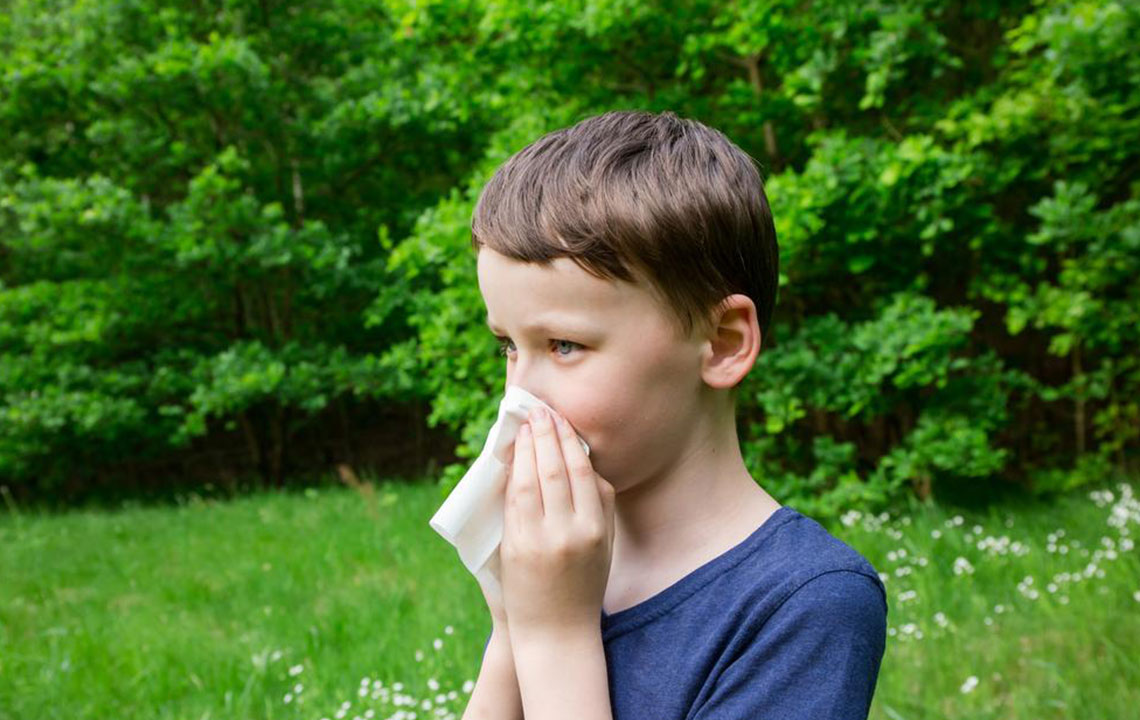Simple Home Remedies for Pollen Allergy
If the changing seasons make you sneeze your head off, instead of putting a spring in your step, you might have a pollen allergy.
Pollen allergies or hay fever is an allergic reaction to the pollen released by plants.
Pollen is a fine powder released by plants during their reproductive cycles. Pollen is fine enough to travel through the air, which helps plants to reproduce. However, the protein in the pollen can be easily inhaled or ingested via the nose, mouth, ears, or eyes which can trigger an allergic reaction in some people.
Approximately 30% of adults have some level of pollen allergy.

Pollen is not only released by flowering plants but also by grass, trees, and weeds. Flower pollen allergies are more common in spring. Grass pollen allergies are more common in summer, and in autumn, pollen allergies from weeds are predominant.
This makes pollen allergies a year-round ordeal for some people, that can be quite uncomfortable and impedes their daily lives.
Pollen allergy signs and symptoms
If you have a pollen sensitivity, every time you breathe in or come in contact with pollen, you might notice pollen allergy signs such as:
- Sneezing
- Itching
- Redness of the eyes
- A runny nose
- Coughing
- Watering eyes
- Difficulty breathing
Pollen allergy signs can also include worsening of asthma and other respiratory conditions in people who are predisposed.
Allergens such as pollen, trigger an immune response in the body. The immune system releases a chemical called Histamine, that works to eliminate this allergen, which is perceived as a threat to the body. Histamine causes the blood vessels to dilate which produces pollen allergy signs such as sneezing, runny nose, and redness of the nose and eyes.
The nasal blood vessels also expand which can cause nasal congestion and sinus infections.
Conversely, the veins of the face constrict in response to histamine, which causes characteristic pollen allergy signs called ‘allergic shiners’ like dark circles under the eyes.
People with asthma are more likely to suffer from hay fever and display severe pollen allergy signs. Pollen allergies can worsen and trigger more frequent asthma attacks, which is a serious concern for many people.
Diagnosis and management of pollen allergy signs
If you experience any of these pollen allergy signs listed above, especially during times of high pollen release, it would be advisable to visit a general practitioner. A general physician may refer you to an allergy specialist depending on the severity of your pollen allergy signs.
A simple skin patch test is usually enough to diagnose a case of hay fever.
To minimize the discomfort of pollen allergy signs, you can take some precautions like—avoiding going outdoors on windy days, wearing dust masks and avoiding gardening work during the pollen season.
Additionally, you can use prescribed medications to help alleviate the pollen allergy signs. The mainstays of allergy treatment are antihistamines.
Antihistamines reduce the production and block the effects of histamine, that is released by the immune system in response to the allergen. Antihistamines can usually be bought over-the-counter, but some formulations may be prescription-only.
Antihistamines can be used as a prophylactic as well as to reduce the severity of an ongoing allergic attack.
For severe pollen allergy signs, you may be prescribed a stronger antihistamine or corticosteroids. Corticosteroids are anti-inflammatory and reduce pollen allergy signs like swelling and redness.
If there is excessive congestion of the nasal passages, you can use a decongestant to clear up the mucus membranes.
Home remedies to combat pollen allergy
If your pollen allergy signs aren’t too debilitating, or if you prefer natural solutions, here are a few home remedies that you can try:
Saline nasal wash
Medicated nasal washes and sprays cannot be used for more than a few days since they can damage the nasal lining and cause rebound congestion. A good alternative is to use a simple saline nasal spray.
A saline spray will flush out the pollen from the nasal passages, and thin out the nasal mucus. This will clear up the nose and help you breathe easier, and also reducing your chances of developing a secondary infection like sinusitis.
Spicy food
The spicy food contains a compound called capsaicin. This is a natural decongestant that will thin out the mucus and help with nasal congestion.
Capsaicin is also a great antibacterial and anti-inflammatory agent.
Quercetin
Quercetin is a natural flavonoid that is found in many vegetables. It is an antioxidant that helps limit the effects of histamine. Antioxidants also reduce the overall production of histamine, which greatly reduces the occurrence of pollen allergy signs.
Quercetin is also known to reduce sinus pain and congestion as well.
Other tips
Wear dust masks and wraparound sunglasses when you go outside during pollen season.
- To avoid direct contact with the pollen with your body and reduce the effects of pollen allergy signs, take a shower and change your clothes as soon as you get back indoors.
- Drink plenty of fluids and do regular steam inhalation to keep your nasal canal clear.
- Keep a track of the pollen count in the air and stay indoors as much as possible, when the count is high.
Pollen allergy signs can range from mild to a full-blown asthma attack. Stay vigilant and watch out for pollen allergy signs.

